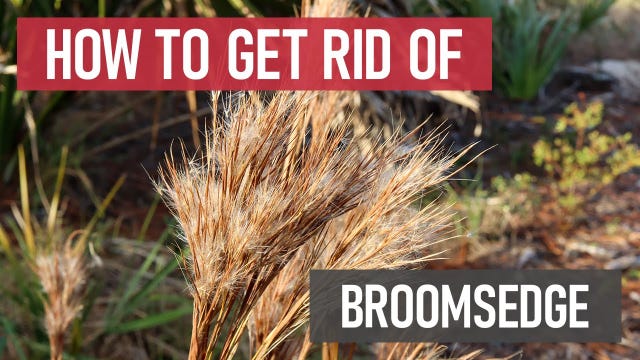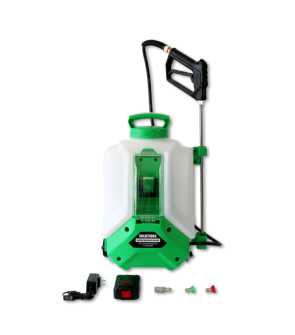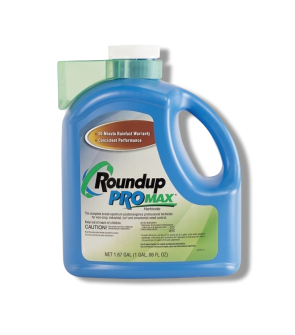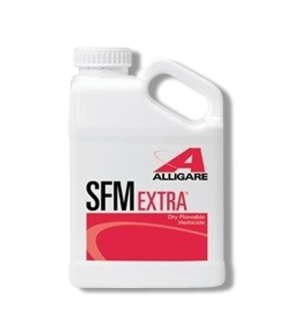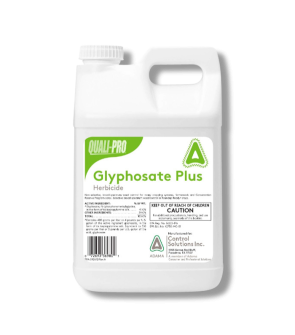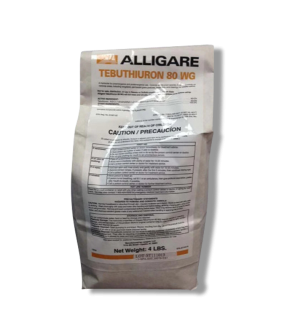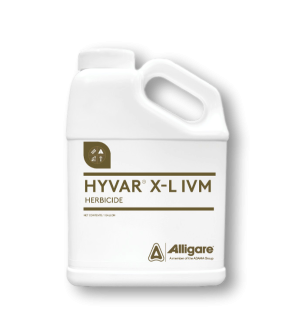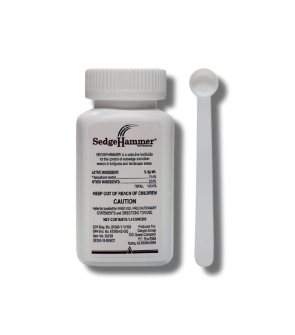Gain access to personalized product screening, the best pricing, rewards, and more!
Most Effective Products
Broomsedge Control: How To Get Rid of Broomsedge
This page is a general DIY guide for controlling broomsedge. Using the products and methods suggested, you get control of broomsedge. Follow this DIY article and use the recommended products; we guarantee 100% control of broomsedge.
Broomsedge, also called beard-grass, broombeard, broombeard grass, broomsedge bluestem, broomstraw, common broomsedge, poverty grass, sedge grass, Virginia beardgrass, whiskey grass, wolf grass, or yellowsedge bluestem is a perennial native weed. Despite its name, Broomsedge is not a sedge; rather, it’s a grass. When mature, it is brown and dry compared to bluish-green when young. Its name comes from the fact that when broomsedge reached its reproductive stage, it produced a golden stem that was often cut, bound, and used as a broom.
This weed thrives in grazed areas that have not been given enough care and maintenance. This allows broomsedge to quickly take over because grazing animals tend to avoid the grassy weed. On pastures, broomsedge is known by the nickname "poverty grass" because it's of low quality and lacks nutritional value.
Livestock hate to eat it. Wherever broomsedge has been established, grazing animals turn their attention to the more desired vegetation in the area. After depleting those sources, broomsedge is left to thrive and survive in the environment.
Our DIY broomsedge treatment guide will show you exactly how to remove broomsedge from your property. Follow the step-by-step instructions below, using the recommended herbicides to the right, and you'll be guaranteed a successful removal.
Identification

Before proceeding with a treatment program, you must be certain you are dealing with a broomsedge infestation. Careless identification can lead to using the wrong treatment methods, which can be a waste of time and money. Below are the following characteristics to help you understand what broomsedge looks like.
- Broomsedge is a perennial grass with a clumping habit, and multiple stems emerging from one basal crown.
- Depending on the species, the leaf blades are rough, flat, and narrow, 4 to 6 mm wide and 4 to 24 inches long.
- Young or early growth starts as green and erect but soon turns a golden orange and slowly becomes less erect.
- It grows from 2 to 4 feet in height and has inflorescences ranging from reddish brown to copper colored arranged in a clump pattern that looks like a broom.
Use the description and the image above to confirm whether you are dealing with broomsedge. If you’re unsure or can’t quite determine exactly which kind of weed you are encountering in your yard, contact us, and we will help identify the weed for you.
Inspection

Once you confirm that you are dealing with broomsedge, you can move on to inspection. During this phase, you will locate areas where broomsedge is thriving and observe the conditions that allow it to thrive. This information will help you know where to focus your herbicide application.
Where to Inspect
Broomsedge prefers to grow in dry open spaces exposed to full sun and soil containing clay, sand, gravel, or rocky material.
Broomsedge is common in primaries, railroads, pastures, meadows, abandoned sandy fields, parks, mined land, and barren waste areas. It may also grow in other open spaces with disturbed soil from past wildfires or grazing.
What To Look For
During the spring, broomsedge will emerge in dense clumps that range from light to medium green in coloration. This linear foliage will become a rich orange to reddish-cropper from late summer to fall with flowering spikes.
Treatment
After identifying broomsedge and inspecting where it is most active in your property, you can begin to treat your area. Be sure to wear the appropriate personal protective equipment (PPE) before handling or applying any product.
Broomsedge is best removed manually, but if you have a large infestation, you may not have the time or energy to pull or cut down all of them. This is when chemical control would be best.
To control broomsedge, we recommend using a non-selective herbicide such as Quali-Pro Glyphosate Plus Herbicide mixed with SFM Extra Pre-Emergent Herbicide.
Be careful when making applications so you don't get the chemical on your desired foliage, as any non-selective herbicides will kill all vegetation it comes into contact with.
Step 1: Measure and Mix
 Quali-Pro Glyphosate Plus Herbicide is a contact-kill herbicide that eliminates any weed it comes into contact with, including broomsedge. Formulated with the active ingredient glyphosate 41.0%, this non-selective product controls weeds without leaving behind a residual in treated areas.
Quali-Pro Glyphosate Plus Herbicide is a contact-kill herbicide that eliminates any weed it comes into contact with, including broomsedge. Formulated with the active ingredient glyphosate 41.0%, this non-selective product controls weeds without leaving behind a residual in treated areas.
SFM Extra Pre-Emergent Herbicide is a pre and post-emergent herbicide that will control broadleaf and grassy weeds within unimproved industrial turf, roadsides, and other non-crop sites. Do not use this product on lawns, walks, driveways, tennis courts, or similar areas.
Determine how much product to use by measuring the square footage of the treatment area. To do this, measure the length and width of the treatment area in feet, then multiply them together (length X width = square footage). For acreage, divide the square footage by one acre (square footage / 43,560 sq. ft. = acres).
To get rid of broomsedge in noncrop and industrial sites, use 1 to 2 quarts of Quali-Pro Glyphosate Plus Herbicide with 2 to 4 oz. of SFM Extra Pre-Emergent Herbicide per 10 to 40 gallons of water per acre.
Mix and apply this product with a backpack sprayer or spray rig.
To mix, pour half the amount of water, then add the proper amounts of herbicides together simultaneously, then pour in the remaining half.
For backpack sprayers, close the lid and agitate until a solution is mixed. Larger application tools would be best stirred separately in a mixing tank or circulated long enough for the solution to mix.
Step 2: Apply Non-Selective Herbicides
Once mixing is complete, you must spray the top and bottom of weeds until wet, but not to the point of runoff.
Be sure to apply these products on days with warmer temperatures and clear skies, as extremely cool or cloudy weather may slow their effects.
The visible effects of broomsedge death may not be seen until 7 days or more have passed after the application of Quali-Pro Glyphosate Plus Herbicide and SFM Extra Pre-Emergent Herbicide.
These effects can be seen as a gradual wilting and yellowing of the plant, which advances to complete browning of above-ground growth and deterioration of underground plant parts.
Prevention
Once broomsedge has been eliminated from your property, you must implement some preventative measures to ensure that this weed does not return.
- A lush and healthy turf is less prone to invasion by the broomsedge plant. Broomsedge grows best in poor soil and disperses an allelopathic chemical that keeps wanted plants from growing. Properly fertilize your landscape at the best time recommended for your particular grass.
- Mow your grass regularly and at the right height. Broomsedge thrives on sunlight, so keeping lush turf shades out weed seeds, hindering the weed's growth. Reseeding thin patches of turf is an effective means of broomsedge control.
- Adjust irrigation to avoid overwatering, as this can weaken turf and facilitate the growth of broomsedge. Water with no more than 1 inch of irrigation once per week.
Key Takeaways
What is Broomsedge?
- Broomsedge is a fast-growing perennial grass known to spread over agricultural sites, especially in the springtime.
How to Get Rid of Broomsedge
- We recommend using Quali-Pro Glyphosate Plus Herbicide mixed with SFM Extra Pre-Emergent Herbicide to eliminate broomsedge from your property.
Preventing Broomsedge Reinfestations
- The best way to prevent broomsedge is through cultural methods that allow the turfgrass to become thick and nutrient-rich. This aids in broomsedge control by choking it out of the landscape.






